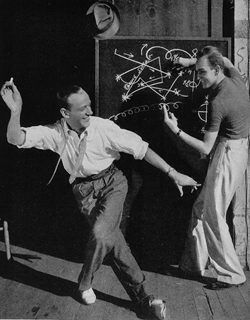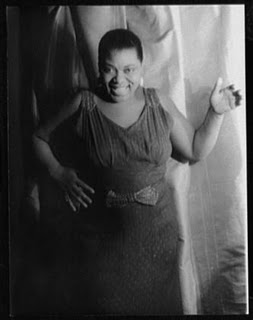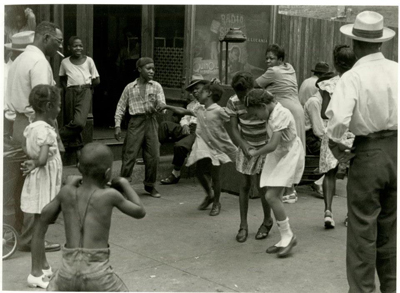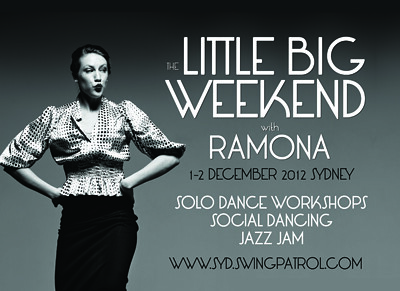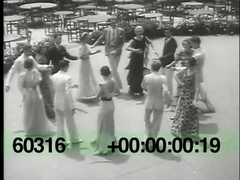I’m stupid busy today, so I don’t have time to round up all my thoughts properly. That means that this post will be typically chaotic, full of spurious assertions and otherwise mo with the dodge.
But I want to keep a note of my responses to robcorr’s latest post about homework, which has an interesting bit at the end:
Homework setting and practice will have to change so that students are learning about self-management and self-regulation. The sort of homework tasks that promote learning these skills will not focus on drill and practice but require homework tasks where students make some decisions and choices and also exercise some autonomy.
This immediately makes me think about how we practice dance on our own. I’m interested in the idea that effective learning involves dance in a range of spaces – classes, practicing at home, social dancing, dancing like a fool in the lounge room, going to night clubs, dancing to live bands, etc etc etc. This idea of dance in everyday spaces is something I’ve borrowed from research into vernacular dance (particularly by Tommy DeFrantz, LeeEllen Friedland and Katrina Hazzard Gordon), where dance is just one part of a whole system of creative and everyday labour/practice, and that this everydayness (vernacularness) is what makes it robust and vibrant. It also makes it flexible, mutable and inconstant rather than fixed, constant and predictable. Which of course is what I love about it. Looking at how dance happens in our own different everyday spaces – different contexts – allow us to think more actively about what we are doing, to break ‘habits’, and to make our movements active choices. This hopefully helps us to become more creative, more responsive dancers. If you give a shit about that sort of thing. Me, I want to learn all the things, so I want all the skills.
LEARN ALL THE THINGS
Relatedly, I’ve been thinking about the classes we run for more experienced dancers not as ‘lessons’, but as spaces which we organise (because we have the time and inclination, not because we are the ‘best’) and which we all participate in for learning funz. And then we go to other people’s classes because we want to experience classes as a participant rather than organiser. We also all go (both class coordinators and participants) to work on material together in an informal space (ie a shared practice time), where the assumption is that we all have the same status, though with different needs and interests. This destabilises the hierarchy that otherwise dominates formal learning spaces. Hopefully.
I want to note, here, that a little hiearchy can be a very useful thing. When a group of people come together to do a complex task, they can organise themselves in lots of different ways. If it’s a time-sensitive task, then leadership (or hierarchy) can be very useful. So I’m not a complete anarchist – I think that structure and hierarchy can be useful.
But I don’t think that hiearchies of power and status should be fixed and constant across all social and cultural spaces. For example, just because you’re a high profile dance teacher, doesn’t mean your opinions about agriculture are more important, or that we should just smile when you say offensive things or sexually harass people.
I do think that, as sensible hoomans, we can agree to follow the leadership of someone in a particular moment in time. I quite like being directed or led by someone else, and I really like the idea of being part of a group that agrees to be directed by someone’s vision or idea. Just to see what happens, or how it turns out. It can be really super fun to be a cog in a greater machine, making something large and wonderful. But when that task is done, doesn’t mean we then continue to do as we’re told, or to cede our decision-making or opinions to those of that leader.
So status – power – can be mutable, changing and passed around. It can be a matter of consensus. The best sorts of communities or social groups are those where members feel confident enough in the group to allow other people to assume leadership roles, to take them on themselves, and to trust other participants not to exploit this power when it comes to them. This sort of community can be very scary for peeps who like nice, constant structures and relationships of power. And an awful lot of lindy hoppers today really like those clearly mapped out, constant systems.
Finally, Rebecca has a few posts about practicing dance including one with a blueprint for structuring practice sessions, which are quite interesting. I think I disagree with almost everything she says in the post Should you be practicing lindy hop more?, mostly because the tone structures the post (and discussion) in a very inflexible way. But also because I don’t think there are just three types of lindy hoppers (regarding opinions about practice), nor do I think these three types are static – we often move through phases depending on lifestyle, interests and, well, life. I’m certain Rebecca realises this (because she is clever), but the blog’s style doesn’t allow for this round-about sort of thinking.
Dance World Takeover often has very prescriptive ‘solutions’ for problems. This is a brilliant approach for a blog that wants lots of readers, and a wide readership. Shorter posts, clearer, more prescriptive language, clear goals and results. Which dovetails quite nicely with a conventional dance class ideology, and with broader cultures of learning and pedagogy in lindy hop. Me, I’m way more hippy like in that I prefer to think and talk through things in a way that yields multiple, self-guided ‘progressions’ rather than ‘fixes’. In other words, more talk, fewer concrete results.
But Rebecca makes an excellent point in emphasising the fact that the structure of a practice session yields particular results and encourages particular behaviours. A formally structured practice session encourages different types of learning than a flexible session with an emphasis on play and self-guided discovery. I think that both approaches are equally important. In fact, as I’ve said above, I think that participating in a range of dance spaces and activities is very good for us – it encourages flexible, reflexive learning. Also with the fun for our brains.
So what has all this to do with homework? Homework is self-guided learning, stuff that you do outside the formal class room. That excerpt above suggests that it works best with older students, but only when structured in effective ways. I’d suppose that this has something to do with developmental processes in children, but also to do with the way school institutionalise children, and trains them to behave in certain ways when self-regulating. But though I’m familiar with the basic arguments in the pro/anti- homework debates, I don’t actually properly know anything about them.
My hippy feminist socialist self suspects that a mutable ‘homework’ practice – for dancing as well as school work – which responds to the needs and interest of the student is most powerful. And here, of course, I think about the montessori and other free schooling models which encourage self-guided study, and which gave us some of the most talented, most creative American lindy hoppers in the world today.
Note: this is, once again, just one of a series of posts on a topic that’s boiling away in the back of my brain. It’s provoked by the everyday stuff in my life (ie teaching and learning and dancing), but in this instance it’s sadly under-researched.
I’m currently teaching weekly classes in solo dance and lindy hop, and have been for about nine months since I first returned to teaching after a ten year break. I spent about ten years (those same ten years :D ) teaching undergraduates in various universities. Teaching dance is almost entirely unlike teaching undergraduates about cultural studies.
I’ve also organised two workshop weekends here in Sydney this year. One covered lindy hop, blues and solo dance, the other covering just solo dance. Both incorporated a teacher-training session. The goal of these teacher training sessions was not to ‘teach teachers to be better teachers’, but to provide a structured session with visiting teachers where local teachers can talk about and experiment with ideas for teaching dance.
I’m just new to teaching dance and organising dance workshops. So I’m trying to make a lot of mistakes so I can learn from them, and I want to understand current practices before I go making radical changes. And because this is dance teaching, I’m not working alone: the best thing about lindy hop is that we’re goddamn collaborative learners. We really, really like doing projects with other peeps. Yay.
I don’t really know much about teaching (dance or university), and I’ve only read sparingly. I need to get more with the learning. I have to say, though, that teaching dance is just about the most interesting thing I’ve ever done in dance. Now, if only it actually paid well…
Here’re some recent posts tracking my thinking about teaching dance to make you angry with their limitations:

